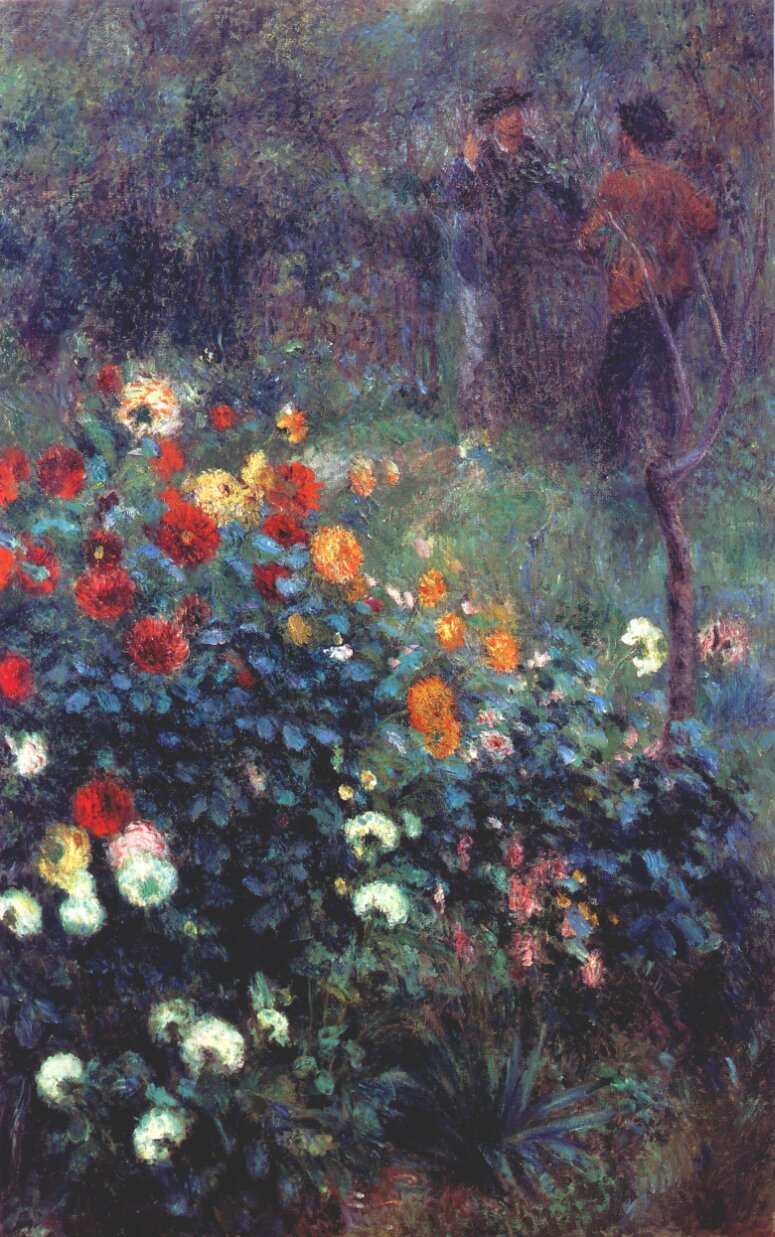art-Renoir.com
Auguste Renoir 1841-1919
Auguste Renoir - The Garden in the Rue Cortot, Montmartre 1876
 Garden in the rue Cortot |
From Carnegie Museums of Pittsburgh:
For the French impressionists, the goal of creating realistic images of the world around them involved painting directly from the subject outdoors. They also sought to capture effects of light, which gave their work its characteristic sense of immediacy and spontaneity. Not surprisingly, they found much to study in their own backyards; thus, the private garden emerged as a favorite Impressionist theme. The garden in the rue Cortot, once part of the grounds of an eighteenth-century chateau, had fallen into neglect when Auguste Renoir discovered it in 1875-76. Its wild beauty and proximity to the Moulin de la Galette (soon to be the subject of one of his most famous paintings) persuaded Renoir to rent a tumbledown cottage on the street for himself and his family. Thereafter, the garden served the artist as both an outdoor studio and a subject for his painting. The Garden in the rue Cortot captures a narrow slice of Renoir's world. The blazing dahlias in the foreground are the true subject of the picture. Their brilliant colors and exuberant growth seem almost a metaphor for the flowering of Renoir's painting under the liberating stimulus of the early Impressionist movement. The untamed nature of the garden lends itself to the broad and varied brushwork of the Impressionist style, which in Renoir's case achieved unprecedented freedom and expressiveness. In the background, as if an afterthought, two male figures—possibly his friends Claude Monet and Alfred Sisley—stand in conversation over a wicker gate. Renoir's free, flickering brushstrokes seem to weave the two figures into the patterns created by the cool light and the contrasting shade that envelop the garden.